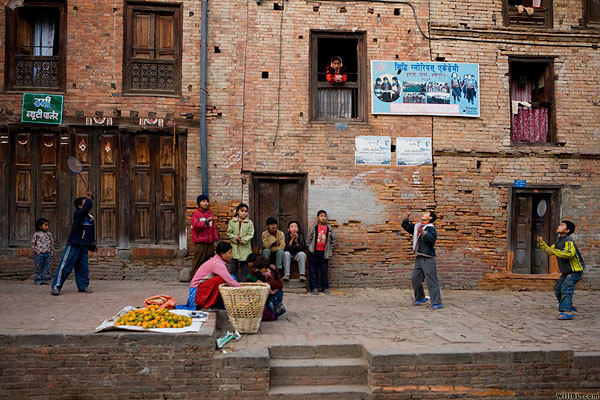
Will and I have just returned from a 14 day trip to Nepal. The expedition got off to an incredible start with a helicopter flight into the Sagarmatha National Park. We flew into this mountainous region from the remote village of Lukla and were almost immediately surrounded by towering 8000+ meter peaks including the likes of Everest and Lhotse. Soaring through deep glacial valleys and over high mountain passes was a once in a lifetime experience. Throughout the journey we were accompanied by Tashi Tenzing, grandson of Tenzing Norgay (who accompanied Sir Edmund Hillary on the first ascent of Mt. Everest). Tashi himself has scaled the infamous mountain three times and is one of the most inspiring and fascinating people we have ever met. Near the end of the flight, we landed at Tengboche, a Buddhist Monastery in the Khumbu region.
For the first 2 days of our trip, we were based out of the capital city, Kathmandu. During this time, we visited the historical town of Bhaktapur, one of three cities located in the Kathmandu valley. We spent an afternoon wandering through the bustling streets, passing street sellers touting their various goods. It was fascinating to observe and photograph the vibrant culture and architecture that extends through the ancient city.
Our next port of call was Pokhara, a city that expanded rapidly in the 1970’s due to the trekking industry. The city is a popular location due to its proximity to the Annapurna conservation area. Normally, one is able to see a panoramic view of the Annapurna mountains from the foothills, unfortunately however, we were unable to experience this for ourselves (except for a few fleeting glimpses) due to the haze and thick fog that sets in at this time of year. Nevertheless, we got some nice photos at the World Peace Stupa, where countless prayer flags had been strung up between the trees.
When we weren’t busy photographing the surrounding countryside, we aimed our lenses towards the ground and focused in on the smaller creatures of Nepal. At this time of year, the country’s climate is much cooler, and while this means that the insects are less abundant, they are much lazier and more amenable for photography.
Although not many people know it, Chitwan National Park is one of the best places in the world to see the Asian one-horned rhinoceros. Once widespread over the whole subcontinent, the Indian rhino is now restricted to localised pockets and only numbers about 2500 individuals. In Chitwan, the rhinos can be found foraging in the tall grassland, which offers them both protection and a copious food source. Obviously this presents a problem for photography. The best way to see the rhinos is from a high position, and this is offered by elephant safaris. The advantage of viewing from elephants is that most of the wildlife behaves more naturally than if it is approached by other means.
Chitwan was a wonderful natural environment, which offered opportunities to see plenty of mammal and birdlife, however the pressure on the land from surrounding settlements was quite evident. On a number of occasions, we observed people coming into the park to illegally cut grass for cattle fodder, or to fish in the rivers. We can only hope that in the future, efforts to eliminate these activities will succeed. Unfortunately we remained eluded by tigers throughout our trip, having only seen paw prints on the dirt roads. Hopefully though, Will and I will be able to return to Asia in the near future to photograph these beautiful cats.






